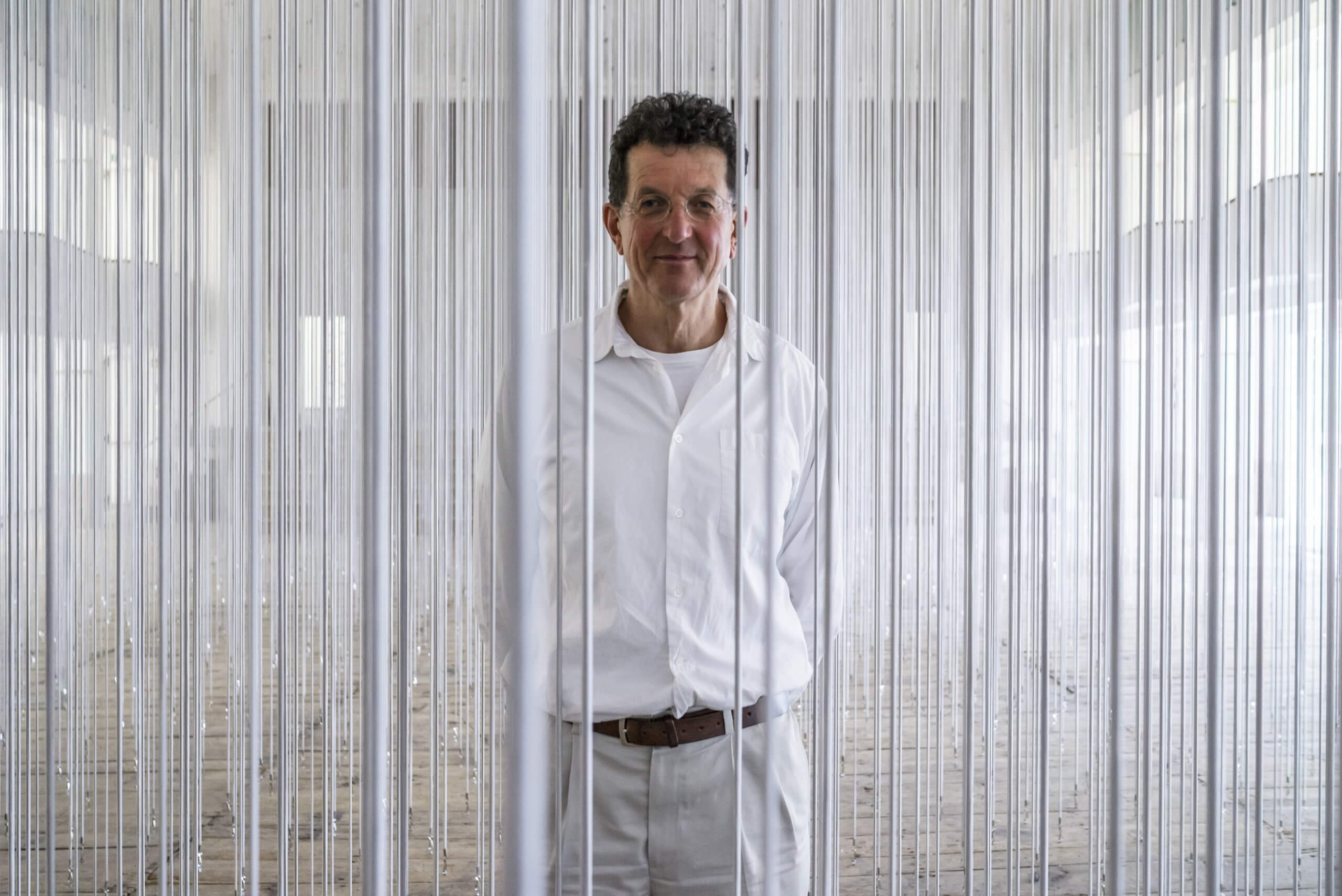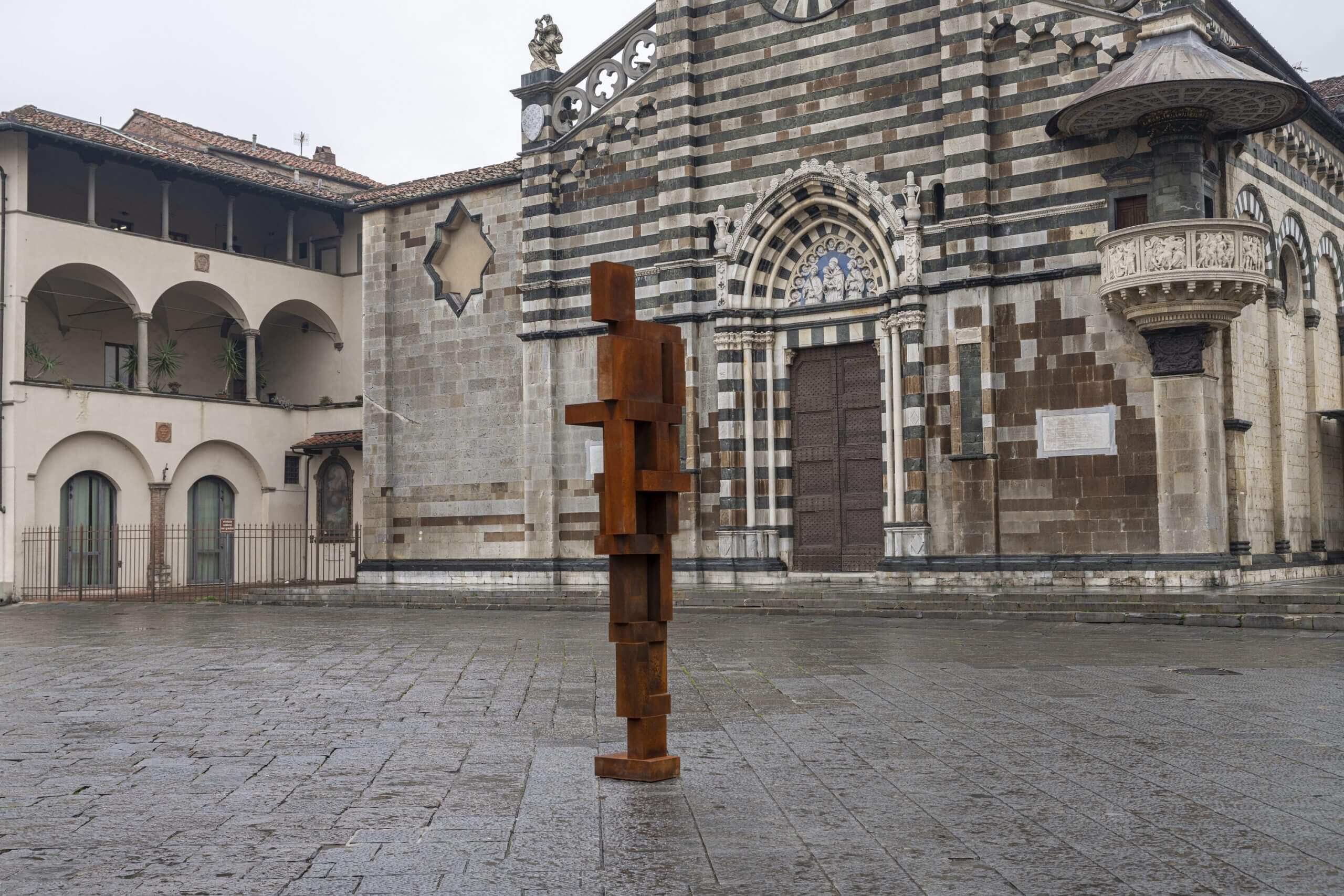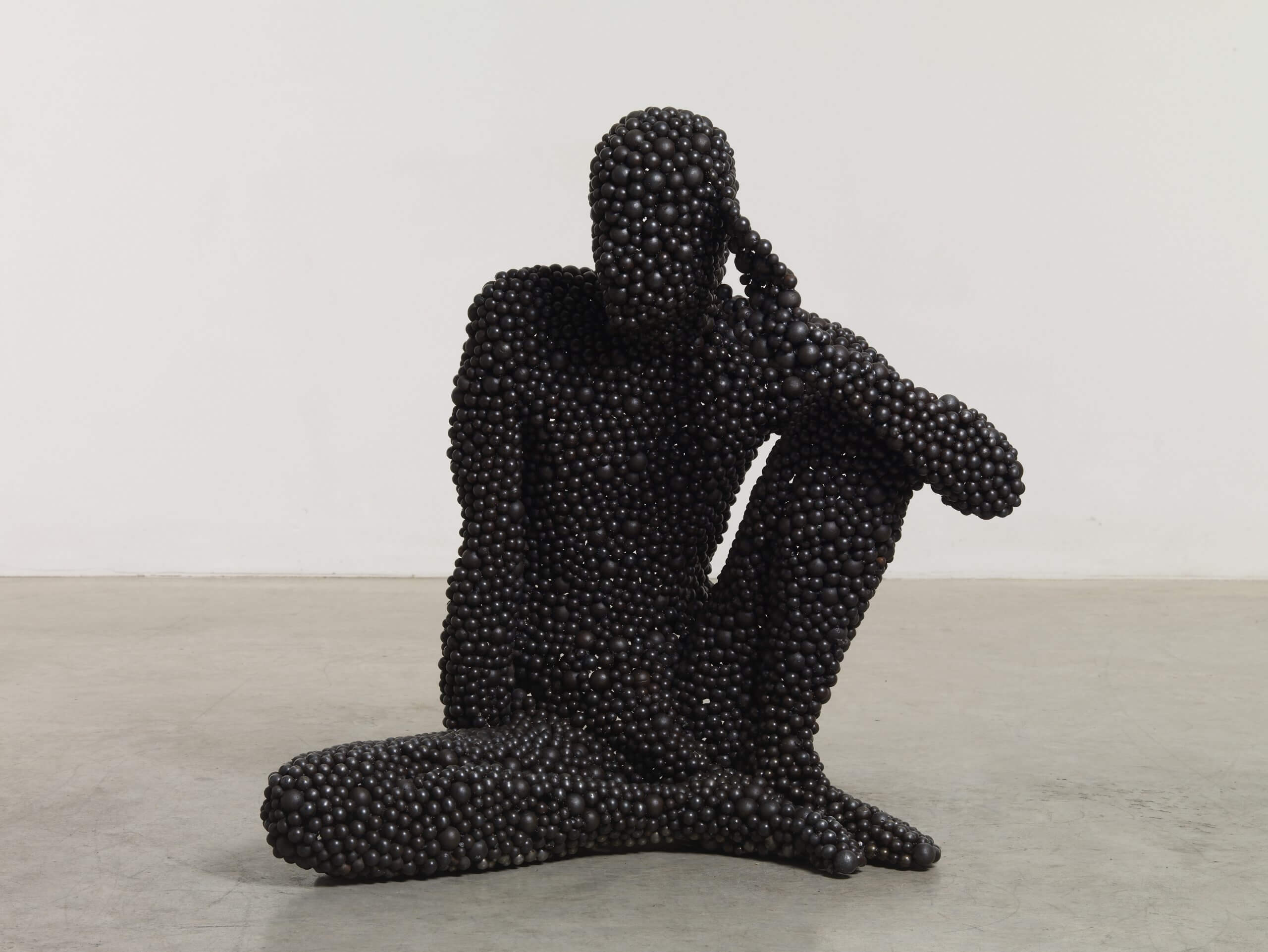On Art and Meditation: Sir Antony Gormley, OBE

Antony Mark David Gormley was born in London in 1950. He is one of the best-known contemporary English artists, with his research centered on the study of the human body, in which memory and transformation are the foundations for self-knowledge.
The body is fragile, but also a “place” to experiment and look towards the future. He received degrees in archeology, anthropology and art history from Trinity College, Cambridge. From 1971 to 1974, he traveled to India and Sri Lanka to further study architecture and ethnic sculpture. Back in London, he attended courses at the Central School of Art, Goldsmiths College (University of London), and the Slade School of Art (University College London). Among his best-known works are Angel of the North (a monumental public sculpture made in 1998 placed in Gateshead, UK), Event Horizon (a multi-site installation launched in 2007 across London, Hong Kong, New York and São Paulo), and his 1994 Turner Prize-winning, multi-site installation, Field for the British Isles (1991).
Gormley’s original figure is precisely that of himself. This does not mean that every sculpture is necessarily autobiographical, but simply a reference from which to execute important existential questions. Since 1990, Gormley extended his interest in the human condition into the crowd, to the multitudes, to the relationship between the self and the other. Another Place, Domain Field, Critical Mass and Inside Australia are a few examples leading up to his latest works like Shy, made in Prato, Italy. In the artist’s own words, the importance of listening to one’s needs and adapting to changes and connections with others is immediately perceptible. His aim above all: to know oneself, to find the right balance useful for learning to be with others, an approach that has matured, in particular, thanks to experiences in India and continued meditation.
FRONTRUNNER presents an exclusive interview with Sir Antony Gormley, OBE. He is represented by Galleria CONTINUA (San Gimignano/Beijing/Les Moulins/Habana/Rome/São Paulo/Paris), to whom we extend our sincere thanks for making this interview possible.

Installation view Galleria CONTINUA, San Gimignano, Italy, 2017
Photo credit: Ela Bialkowska, OKNO Studio
You are one of the most important contemporary sculptors in the world. Why did you choose to become an artist and, in particular, a sculptor?
Sculpture is not about making a picture of the world, it’s about changing it. For me, sculpture remains the most engaging and exciting kind of making: bringing something into the world that has not been there before and allowing it to affect and transform its context. Making an object becomes the making of a place. Sculpture brings stillness and silence to a moving world. This is its power, it is a thing amongst other things but committed to making the palpable intelligible in the trust that material can directly affect mind. With sculpture, a thing external to us can change our internal condition.
Sleeping Place, OPEN INTROVERT V, Crunch, Clutch and Feeling Material XXVI are among your works which all represent the human body as a base. What does it represent for you since your own body was the object of your production?
I use my body as an example of the common human condition of embodiment. There is nothing particularly special about my body but the truth claim of the work is that these are indices of a particular moment of a particular human life, time taken out of time and registered in a mould. The body is the most subtle instrument and registers being in all its qualities. I simply want to evoke the body as a place, a space of transformation, imagination, and feeling. I make works that are less concerned with representation than with reflexivity. In a world which is rapidly devolving into cyberspace the importance of mineral, enduring objects against which we can calibrate our movement in time is increasingly important.
Do you think there is still a lot to understand about the human and his behaviour?
The more we know the more we realise we do not know − about ourselves and the nature of consciousness, the biosphere, and the elements in which we are embedded. I believe that human beings have always made images of themselves and of other living creatures, whether trees, bees, deer, or horses, in order to understand themselves. I believe that the making of sculpture and the making of a human being are similar evolutionary processes and need each other in order to gain understanding and empathy.
When and where do you find inspiration for your works, and your choice of materials?
We exist, things exist; the challenge is to make internal life − the mind and feeling − as real as the objects around us. My inspiration is life and the feeling of being that is contained within the vessel of a body. It’s important to me that I use common materials. I avoid bronze and marble because they are so associated with received cultural history. I use iron because it is a concentrated earth material. If we were to go down 3000 kilometres beneath the surface of the Earth, we would find liquid iron at around 8,000 degrees Celsius. Iron – at an even higher temperature and pressure – is what forms the core of this planet. Liquid iron is what gives the planet is magnetic field and its density, both of which keep us on our trajectory in space. I want my work to ground experience and I want the work to be self-grounded: iron helps to do that.

SHY (2017)
Cast iron
363.3 x 84.2 x 62.7 cm
Installation Piazza Duomo, Prato, Italy
Photo credit: Ela Bialkowska, OKNO Studio
Courtesy of Associazione Culturale Arte Continua APS
You have lived in India and Sri Lanka and discovered how important it is to meditate. How much spirituality is there in your artistic production and how did meditation change your life?
Meditation has been essential. Up to the time when I took my first Vipassana course with SN Goenka in Dalhousie, India, I had understood that all knowledge came from books or the thoughts of others; meditation made me realise that contemplating the rising of being itself was even more valuable. Engendering concentration through the observation of breath as a bridge between the autonomic and conscious mind, and then to use this concentration to explore the darkness of the body, was a revelation and remains at the core of my practice.
Your work is often in a public space, as if to underline a necessary link between man, space and nature. Singular sculptures or bodies distant from each other, like Learning To Think (1991), seem to underline how important solitude is. To be with oneself, to learn to be with others. Is there a reason for this, in particular?
There are many theories about how the factory of the self works. It could be said that we are the sum total of our connections with others, but it could also be said that we can only discover our own values when in communion with time, space and the elements detached from the social sphere. In truth I think that one process of individuation is fed by the other. We need to take the self that is the result of all our interactions with others out of its social matrix and see if it can survive solitude. We also need to take whatever realisations that we have achieved in solitude back into the social matrix to understand their meaning.
Tell us about SHY, the cast-iron sculpture installed in the Piazza Duomo in Prato, Italy. It’s a project created in collaboration with the Comune di Prato, Centro Pecci and the Associazione Arte Continua. The work is in dialogue with the architect Michelozzo and the artist Donatello. Why did you choose this title and what brought you to such an important place?
The commonly held idea of sculpture is a statue in a public square. These statues often attempt to memorialise and celebrate a national or local hero that idealise their subjects and present us with a moral exemplar, say of courage or fortitude. By being raised on a plinth or column they implicitly suggest that these individuals represent a higher value than us mere mortals below. With Shy I was interested in using the scale of monuments to talk about something very different, the internal life of all of us, a realm that often remains secret and uncommunicated. I like the paradox of having a large, 4.5 tonne object in collective space that nevertheless evokes the uncertainties of our inner life. In using the language of modernity and industrial production I want to confront all of the hierarchies that statuary has, in previous centuries, supported. Far from celebrating power, this work celebrates human porosity, provisionality, an openness to experience, and our awareness of context, condition, and others. I wanted this work to share the piazza with its viewers, the people of Prato. I hope that it is open to interpretation and its meaning remains unfixed in the same way as its profile changes as you walk round it − from one side looking like an unsteady stack of blocks to something that resembles a human body on another − it’s always provisional, constructed of mass but also of voids.
Sculpture is a question in material form: what is a man and what is a sculpture? You are invited to walk around it, to investigate it, to ask it and yourself and any passers-by, “What on earth is it doing here, why is it here at all, what is it, who caused it to be, what is its relationship with me?” The sculpture leaves all of these queries unanswered, it stands there without a plaque in order to provoke questioning and in causing these questions to be asked allowing other questions to follow.

SONG (2008)
Forged ball bearings
86 x 86 x 60 cm
Photo credit: Stephen White & Co. (London)
© the artist
What are your upcoming projects?
At the moment I’m trying to find a good way of activating the internal spaces of a Palladian church. This is very different from the challenge of introducing SHY into the centre of Prato. Palladio was a master of proportion and follows Vitruvius in his understanding of the proportions that stem from the human body. I thought it might be interesting to introduce to this well-ordered space a chaotic abstract body constructed from a series of interconnecting cubic space frames that intermingle with the architecture, occupying the whole nave and transept, encircling the columns and bleeding into the apses and aisles. It would be made in light reflecting aluminium to make a kind of drawing in three dimensions, a platonic geometry at scale. I want the work to link our experience of walking through this sublime architecture and its contained light while at the same time being made conscious of our own bodily journey through space.
Responses